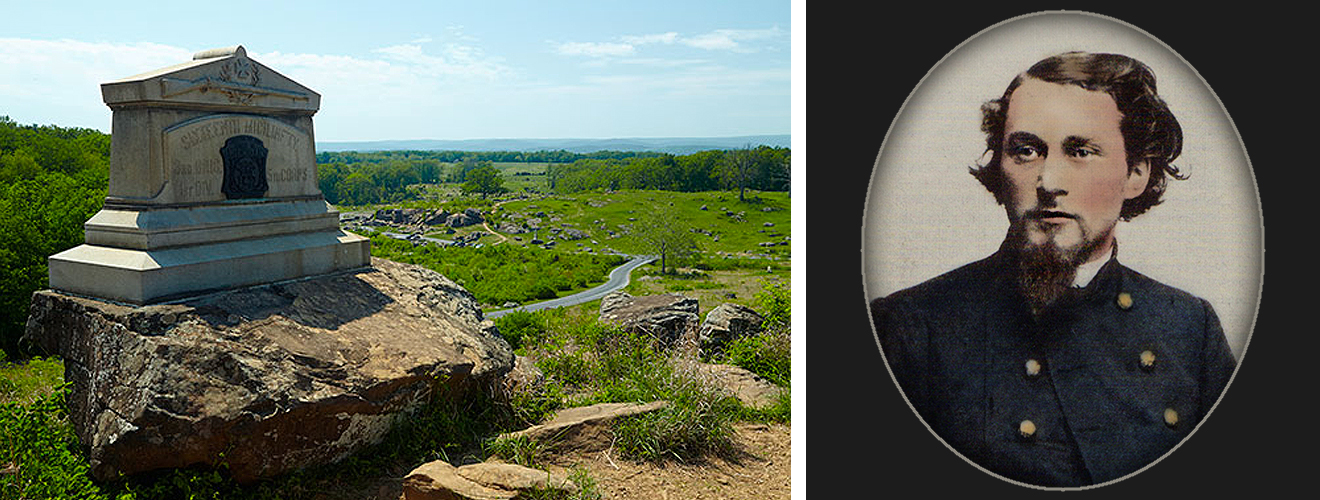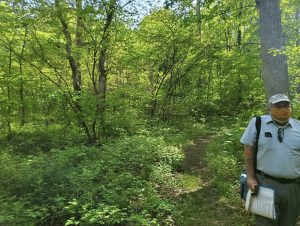
20 Jun Fought with Its Usual Valor: The 16th Michigan on July 2nd, 1863 – Part 1
by Jared Mike
This regiment was mustered in on September 8th, 1861 as “Stockton’s Independent Regiment” in Detroit under the command of Col Thomas Stockton. Stockton, with former military experience, was able to convince the War Department to allow him to raise a regiment outside of Michigan’s quota. Originally, Stockton thought that he could get a regiment during the initial call up but this never happened. This was due to Michigan Governor Austin Blair’s clash of personalities with Stockton, and possibly Stockton’s political affiliation as he was a lifelong Democrat. The regiment was sent out to Washington on September 16th with only 750 men in 8 companies (before the unit was completely formed). Men from a failed Michigan Lancer Regiment and an isolated company were added to raise the regiment to full strength of 10 companies. A company of Sharpshooters raised by Kiniston Dygert (Later called Brady’s Sharpshooters after a mentor of Dygert) was attached to the regiment as well. Around this time (mid-March 1862), the regiment was officially in the service of the state of Michigan and therefore became the 16th Michigan Infantry Regiment.
The regiment fought in a series of bloody engagements in 1862-1863. Welch was praised for his performance while Stockton was underwhelming (It didn’t help that he was captured at Gaines Mills). Stockton was asked to raise a brigade of loyalists in Tennessee but the scheme failed miserably. Stockton would resign in May 1863, which officially placed Lt. Col. Norval Welch (pictured above) in command of the regiment. A lot of confidence would be placed on Welch as he was known as a brave man and an exceptional leader. The skirmish at Middleburg/Upperville raised his profile some more, with his friend and superior Col Strong Vincent praising the performance of the regiment.
The afternoon of July 1st found the 16th MI near the small hamlet of Hanover, Pennsylvania but their stay was short. The regiment (and the rest of the division) were then marched to Bonnaughtown (today Bonneauville) where they bivouac for another few hours. They resumed their march near daylight and ended up near Power’s Hill by mid-morning. The stay here was longer but interrupted around 15:00 when Confederate Artillery opened up on the Federal left. Soon they will be sent down Granite Schoolhouse Lane and into the fields across the Taneytown Road (just north of the George Weikert Farm). The Temporary Division Commander Brig Gen James Barnes left to find orders when a courier from Major General George Sykes arrived. There were orders requesting Barnes for a brigade to be sent to some heights behind the end of the Union left (Little Round Top). Vincent would take the orders upon himself and the brigade moved out, with Col James Rice leading the men.
Vincent went ahead to recon the ground, moving up the slope without his horse or sword. Seeing that the southern end was defensible, he had Rice move his men east of the crest into the woods where it was flat enough to move. Men recalled artillery shells crashing into the treetops; branches and chunks of wood falling on top of the soldiers. They moved forward with the 44th NY in the lead, followed by the 83rd PA, 20th ME and 16th MI. Nearing the southern slope, the brigade was placed into line. The 16th MI was formed in a ravine near the left of the 20th ME, making them the extreme left of the Union Army. Company A and the Brady Sharpshooters were sent forward as skirmishers. Not long after they went forward, Welch was ordered to take his command to the right of the 44th NY as those skirmishers already made contact and a large body of the enemy was pressing toward Vincent’s right.
While Welch moved the rest of his command, Company A and the Sharpshooters moved forward with Company B, 20th ME skirmishers on their right. They would have enemy fire from their right and rear as they were located on the northern slope of Big Round Top. They now were cut off from their brigade and could rejoin by moving around the Union left. All three companies, plus some 2nd U.S.S.S. and 44th NY infantrymen, fell back to a stonewall where they were protected from the enemy. As the 15th AL hammered at the 20th ME from two directions, these men waited until they had the opportunity to attack. When the 15th AL started to waver, the ad hoc formation advanced and opened fired. The 15th AL now thought a new regiment was on their flank and hastened their withdrawal. Scores of men were captured and the skirmishers’ fight was now done. Three men were killed or wounded from Company A while the Brady Sharpshooters had up to ten casualties. The 16th MI fight was only gearing up as Welch was having his own difficulties on the right of the line.

LBG Stuart Dempsey giving the author a presentation about the 16th MI at Gettysburg. This would be the viewpoint from Lt Col Norval Welch’s 16th MI 1st position in a ravine near the 20th Maine’s left in the late afternoon of July 2nd 1863. You are looking slightly southeast, with Big Round Top’s eastern slope being toward the left of the photo in the distance. Company A and the Brady Sharpshooters would have advanced from here and sent forward being the rest of the regiment moved to the right.
No Comments